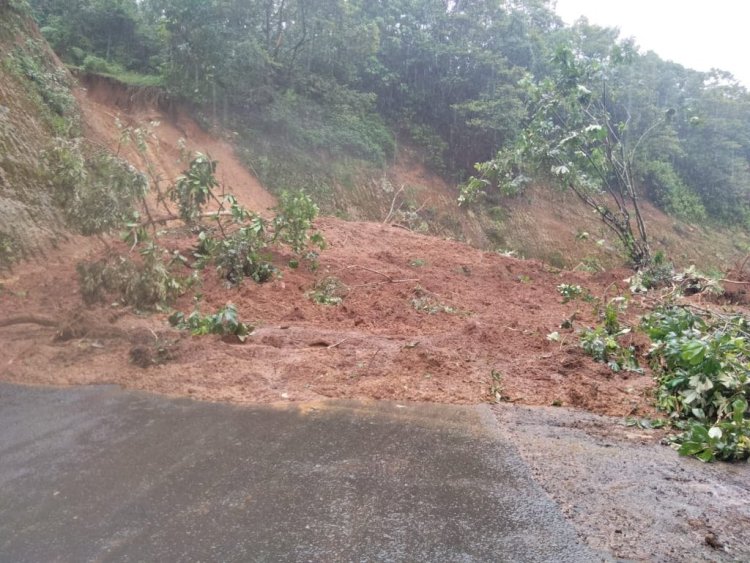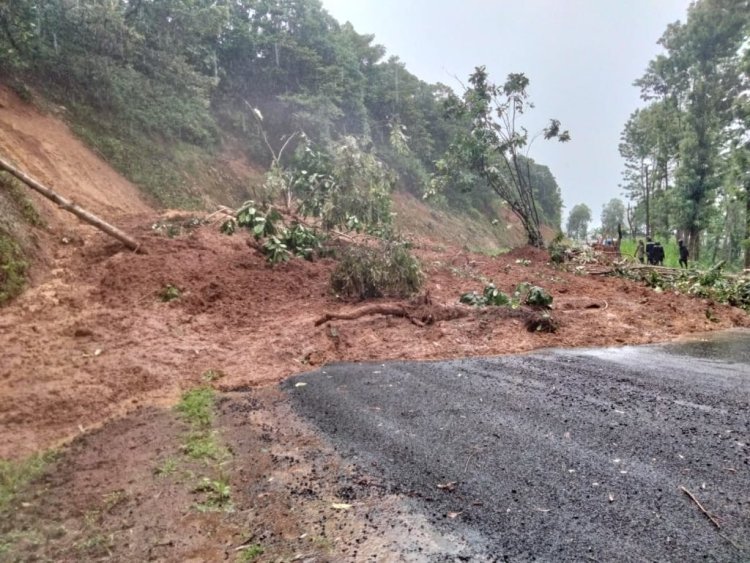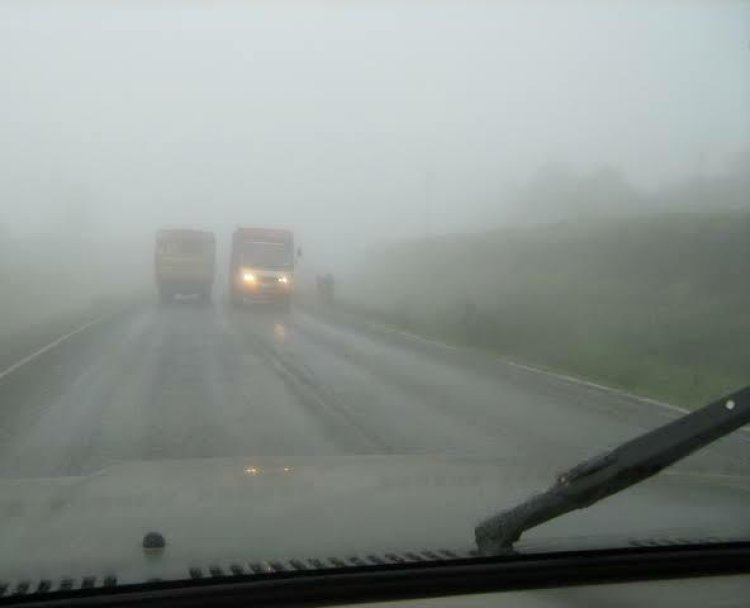KeNHA Warns Motorists After Landslide Blocks Traffic On Meru-Maua Highway
The landslide prompted KeNHA to advise the public to use alternative routes to and from Maua town until further notice.

The Kenya National Highways Authority (KeNHA) on Friday, November 3 advised motorists to use alternative routes after the Meru - Mikinduri - Maua Highway was rendered impassable by a landslide.
Photos shared by the authority showed mounds of mud from the landslide cut off a section of the road as many parts of the country experienced heavy rainfall.
The landslide prompted KeNHA to advise the public to use alternative routes to and from Maua town until further notice.
"The Kenya National Highways Authority (KeNHA) wishes to notify and caution motorists plying Meru - Mikinduri - Maua (B102) Road of a landslide on the road section which has been occasioned by the heavy downpour experienced in the area," stated KeNHA in part.

A section of the Meru - Mikinduri - Maua road that was blocked by a landslide on November 3, 2023. /KENHA
"The public is advised to use alternate routes, to and from Maua town."
KeNHA further noted that it was on site clearing the road section to restore traffic flow and ensure the safety of the motorists.
The incident came barely a week after KeNHA advised motorists using the Isiolo-Moyale Road to approach it with caution following flooding that occurred along a section of the road.
Photos seen by Viral Tea and shared by the authority showed floods submerging sections surrounding the road, making the road impassable to motorists.
Guide For Driving In Wet, Rainy Conditions
Just like driving at night, the risk of accidents increases also when it rains. This is because rain reduces visibility on the road and makes road surfaces more slippery, making driving difficult.
To drive safely on Kenyan roads when it rains, you must be extra cautious to ensure your safety and that of other road users.
Slow down and maintain a safe distance
One of the most important things to do to drive safely in the rain is to slow down and maintain a safe distance from the vehicle ahead of you. Rain reduces visibility and you shouldn’t drive fast when you can’t see the road.
It also makes the road surface wet, which might cause skidding and increase the braking distance when you apply the brakes. You are therefore recommended to drive slowly and keep a safe distance to get enough reaction time in case of emergencies.
Use your fog lights, parking lights or headlights
Some cars have fog lights installed in them, and they are there to be turned on when the weather is foggy or rainy for other drivers to see you.
If your car doesn’t have fog lights, then you can use your parking lights. However, depending on the weather conditions, you can turn on your headlights if the visibility is too low.
However, make sure to use the low beams so as not to blind other drivers. Also, use turn signals correctly to communicate your intentions to other drivers.
Be extra cautious at intersections
Intersections can be dangerous when it’s raining, as it’s difficult to see oncoming vehicles and judge their distance.
Slowing down and looking carefully before proceeding is one of the most important safe driving tips to observe while at intersections.
Stop completely and be extra cautious when turning. Yielding the right of way can also help you navigate safely.
Avoid hydroplaning
In broad terms, hydroplaning (sometimes referred to as “aquaplaning”) is uncontrollable sliding on a wet surface. Essentially, your tires have lost their grip on the road, and are instead riding on top of the standing water.
This can lead to an assortment of undesirable, and sometimes dangerous circumstances; the car can turn sideways, veer into other lanes/the guard wall/off the road completely, and even flip in some cases.
In simple terms, hydroplaning happens when you drive too fast through a flooded section, which causes your tires to lose contact with the road. It is even worse if your tyres are under-inflated as this can make you lose control of your vehicle and cause an accident.

An image of a foggy Nairobi-Nakuru Highway. /FILE
To avoid hydroplaning, reduce your speed, avoid driving through stagnant water if possible, and ensure your tires are properly inflated.
Watch out for pedestrians and other road users
Safe driving in the rain is not only about avoiding accidents with other cars, but it is also important to be mindful of other road users.
In such situations, it’s difficult to spot pedestrians, cyclists, and other road users, so it’s important to be alert and watch out for them. Be careful not to hit pedestrians who are crossing or walking by the road.

 admin
admin 




